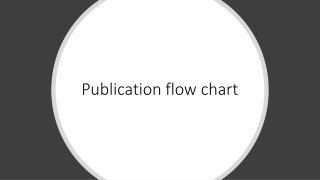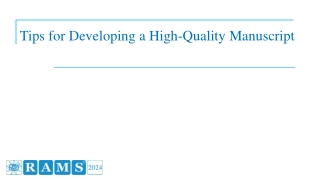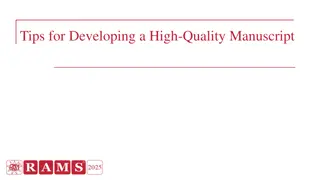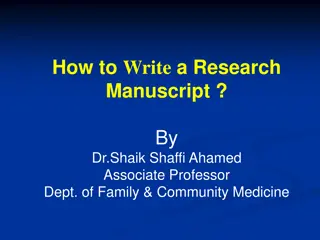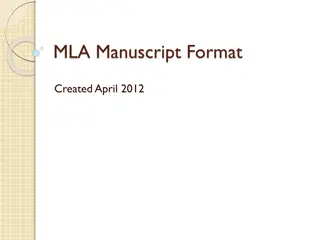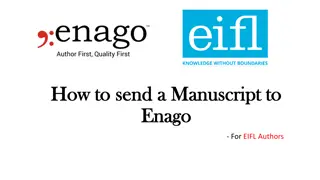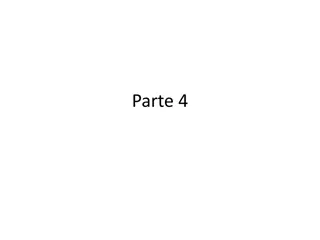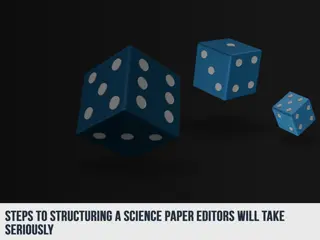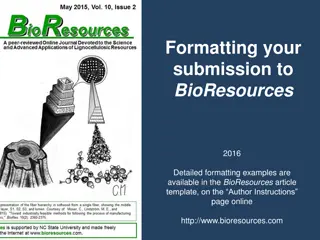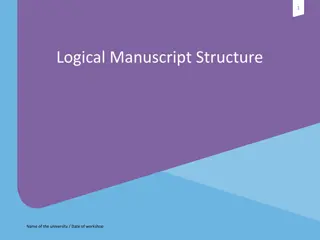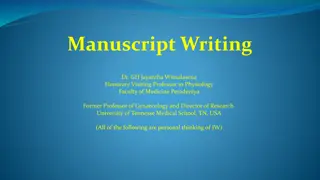
Effective Manuscript Preparation for Academic Publications
Learn the essential steps involved in preparing a manuscript for academic publication, including writing, revising, and creating figures and tables. Understand the importance of each section, from introduction to discussion, and get tips on selecting journals and writing an impactful abstract. Properly present your research findings in a clear and concise manner to enhance the chances of successful publication.
Uploaded on | 0 Views
Download Presentation

Please find below an Image/Link to download the presentation.
The content on the website is provided AS IS for your information and personal use only. It may not be sold, licensed, or shared on other websites without obtaining consent from the author. If you encounter any issues during the download, it is possible that the publisher has removed the file from their server.
You are allowed to download the files provided on this website for personal or commercial use, subject to the condition that they are used lawfully. All files are the property of their respective owners.
The content on the website is provided AS IS for your information and personal use only. It may not be sold, licensed, or shared on other websites without obtaining consent from the author.
E N D
Presentation Transcript
T35 Presentation Manuscript Preparation Kerri O Malley, Ph.D. 06/25/18
Figures and Tables Manuscript Writing Manuscript Writing How to write a paper. Melina Kibbe MD (2013) How to write a manuscript for publication. Kibbe (2016) Preparing to write, writing, and then revising. Methods Results Figure Legends Introduction Discussion Abstract Acknowledgements References
Figures and Tables Preparing to Write Preparing to Write Methods Select Journal Browse TOC Impact Factor Retrieve Instructions for Authors Character & word count Spacing Number of Figures Results Figure Legends Introduction Discussion Outline Abstract Figures & Tables Acknowledgements References
Writing Writing Introduction Why you did the study; spark interest 1. State the problem 2. State what is known and unknown about the problem 3. Your aim and hypothesis Methods How you did the study; enough information for others to reproduce the experiments; include statistics Results What you found when you did the study; tell a good story A common mistake made by authors is to include data in a table or figure and also describe it in the text. Discussion What it all means 1. Paragraph 1 should summarize the findings with respect to the hypothesis. 2. Paragraphs 2 and 3 should compare and contrast your data with published literature. 4. Paragraph 4 should address limitations of the study. 5. Paragraph 5 should conclude what it all means and what should happen next.
Revising Revising
Figures and Tables Abstract Abstract Methods You will have a better sense of what to include in the abstract, as well as what to emphasize, after the majority of the paper is written. should include pertinent data from the manuscript and accurately portray what is in the manuscript. applicable to posters, presentations, etc Results Figure Legends Introduction Discussion Abstract Acknowledgements References

